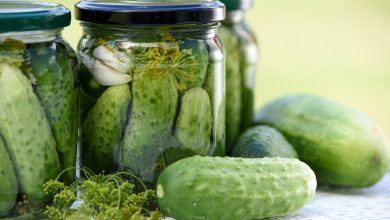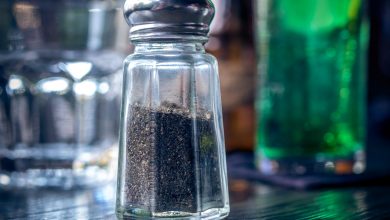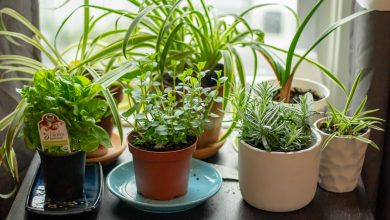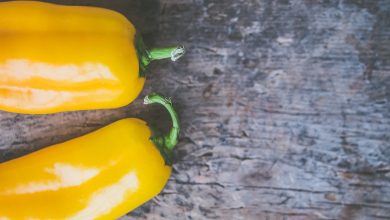Top Vegetable Gardening Tips for Beginners
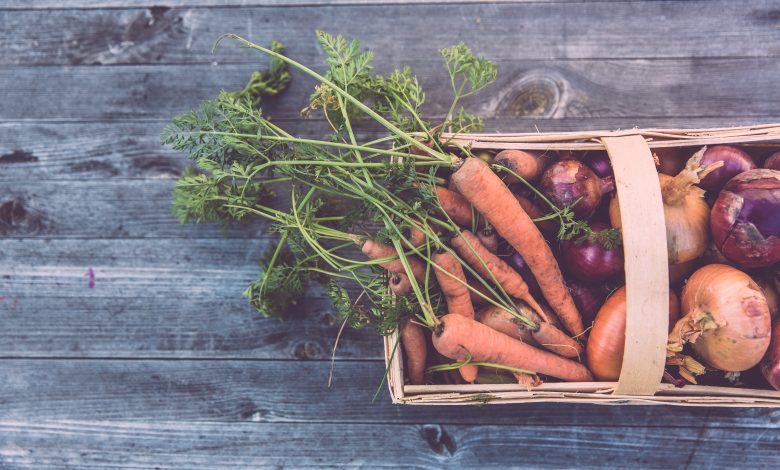
Starting a vegetable garden is exciting, interesting, and challenging. It can bring you one step closer to financial freedom, allowing you to grow your own food, or you can do it simply as a fun new hobby to take on.
Whatever your reason, vegetable gardening comes with its own series of challenges that differ in drastic ways from traditional gardening. This article is here to help you navigate those challenges and provide you food for thought when it comes to planning your new venture
Choosing Your Plot Size
Before you start anything, you need to decide how big you want your vegetable plot to be. The size you select is going to come down to your needs and wants, but generally speaking, it’s best to start small.
Vegetable garden plots require a lot of maintenance. You need to keep the area free of weeds, maintain the soil (which includes monitoring its PH levels), and fertilize it regularly. Needless to say, this can get overwhelming quickly.
To avoid that, start out with a ten foot by ten foot plot, or somewhere thereabouts. It doesn’t give you too much room for growing, sure, but it’s a solid foundation for you to build your skills upon.
Make sure you set up your rows correctly. With a ten by ten plot, ten rows, each ten feet long, is fine. Just be sure that the rows run north and south, as opposed to east and west, in order to take full advantage of the sun.
There isn’t anything stopping you from having a bigger plot, though! As a beginner, you can arguably go up as big as a 16 by 20 foot plot comfortably. However, that depends on your prior gardening skills.
If you are growing vegetables to try and get the kids to start eating more veggies, then you’re better off trying to push the envelope a little bit on just how big of a plot you can use. For a family of four, the aforementioned 16 by 20 foot plot would be best, but the type of vegetable you’re growing also plays a part here.

The Best Beginner Vegetables
You have plenty of room to maneuver here, and what veggies you choose fully depends on your situation.
If the kids don’t eat tomatoes (honestly, can you really blame them?), then you’re not going to grow tomatoes, and if you have a small plot, you’re not going to grow a bunch of lettuce heads, and so on.
That doesn’t mean that you can just plow ahead with whatever the kiddos are going to happily consume, though. You need to make sure you possess the necessary skills to grow the vegetables in question. In the beginning, that isn’t going to leave you with a lot of options, but as time goes on, your skills grow and give you a wider range of possibilities.
To make use of your space, grow vegetables that can be used in plenty of dishes. The best crops to start out, in the opinion of many, are:
- Garlic
- Potatoes
- Onions
Provided everyone eats them, these three can be used in so many different ways.
Garlic can go in pretty much anything. Just crush up a clove and add it to the oil in the pan. Throw in your chicken on top of it or in a veggie mix, and it adds that extra layer of flavor that takes dishes over the top.
Potatoes are self-explanatory – a vegetable so versatile that the Irish survived entirely on them before the time of the famine. You can boil them, roast them, fry them, chop them into chips, put them in a soup, or mash them, and the list goes on.
Lastly, onions are one of the nicest vegetables out there, and they’re so useful. They’re at home in any stir-fry, curry, or finely diced and used with garlic to create a lovely base for you to pan-fry some chicken in.
There are other easy to grow vegetables out there, though. So if these don’t strike your fancy, do a bit of research. You’re bound to find something you want to grow.
Plant at the Right Time
Like flowers, vegetables are fickle creatures. They require care, nurturing, and above all else, need to be cultivated at the right time of year.
This tip requires you to do a bit of planning before-hand, depending on what crop you’re growing. Some vegetables can take upwards of three months to fully mature and start producing, so make sure you leave yourself with enough time.
As a general rule of thumb, most plants are better off being planted in early spring, right after the last frost, and then once again in the fall, a week or two before the first frost.
Of course, this can vary wildly from crop to crop. To help combat this variation and unpredictability, you can make use of one of the many free gardening calendars available out there on the internet.
These handy little tools are a godsend. They can tell you when to plant for what crop, as well as when to expect a yield. Not only that, but a lot of them also tell you the difference between planting the crop outdoors versus planting it indoors.
You can open up your wallet and pay for one of these, and if you’re serious about the veggie growing game, you may want to. Generally, though, there is no need to flush out the funds for a premium calendar. The free ones available to you do the job just fine – you just need to find the right one.

Understand Your Fertilizers
Some vegetables react better to strong, decaying manure, whereas others work best with light fertilization. So like so many entries on this list, this is going to require you to do a bit of research. It’s a lot of effort, but it is be worth it in the end.
There are a few general rules you can work with, though. Light feeders are the likes of leafy greens and root veggies. For these guys, follow the recommendations that are on the seed packet.
The heavy feeder category consists mainly of beets, tomatoes, corns, and the brassicas family, which are broccoli, cauliflower, sprouts, etc. These benefit the most from a thick layer of compost or rotting manure, as opposed to the lighter alternatives for the greens.
Using the wrong type with the wrong crop is an easy way to kill your harvest before it’s even had a chance to begin, so do yourself a favor and do your research before you go dung-ho!
Choose the Right Spot
You then need to decide where exactly to start your plot. A good location can make or break your entire vegetable growing experience, so it’s vital that you don’t overlook it. There is a lot that goes into this decision.
The first is convenience. Vegetable gardening is meant to be fun, not a chore, but it could begin to feel like doing the dishes mighty quickly if you have to trek 15 minutes each way to get to the garden in the first place. You end up being put off by the weather and lazy days, and ultimately, your vegetables suffer. So make sure that your plot is as close as possible to you.
Then you need to worry about sunlight. If you remember high school biology, you know that all plants, veggies included, need sunlight to perform photosynthesis, and to grow up big and strong. Eight hours of sunlight exposure is optimum, but six is okay too. Any less than that and you need to start looking at other options.
Drainage plays a part in this, also. You aren’t going to get anywhere growing some vegetables in waterlogged soil, so make sure you don’t plant in an area where rainwater is going to congregate, like the bottom of a hill.
There are a few other factors, soil PH and toxicity, for example, but you don’t need to worry about these at the start. Focus on these three for your first plot, then expand your knowledge when you begin scaling your veggie garden out.

What Tools To Get
Now that you’ve got all the pre-planning out of the way, you’re going to need to buy some tools.
You may have some gardening supplies lying around if you already grow flowers, but if not, then here are some of the essentials.
- Hose or watering can: Needless to say, a hose or a watering can needs to be on your list. Chances are you already own one, but if not, then go out and buy one ASAP.
- Shovel: Next up is a shovel for digging. Again, this is one you probably have lying around. If you do need to buy one, a round tip model is your best option.
- Hoe or trowel: You’re going to need to pick up a tool for weeding. For larger plots, you can get a hoe, but for smaller gardens, use a hand trowel.
- Rake: A rake won’t go amiss for keeping things neat and tidy, and a fork for turning and loosening up the soil should be on your list as well.
That’s the majority of your gardening tools, but you’re also going to need things like gloves and a bag. Good sturdy gloves are essential; they can help protect your hands and stop you from getting cuts and infections. Scissors, knee pads, and a wheelbarrow are also good additions to your kit.
Just make sure to keep on top of maintaining your tools. Costs can add up pretty quickly if you need to keep on replacing things, so do yourself a favor and look after them the first time around.
Draft Your Garden
Before you get down and dirty, take some time to draft out your garden on a piece of paper.
It’s a good practice to actually keep a journal with all your gardening related notes in it. You can keep a log, your drafts, seeds, thoughts, weather conditions, and more all written down for easy access.
If you don’t feel like going the full nine yards, at the very least, do draft up an outlook of your plot.
Grab a pencil and a bit of paper and draw up a rough blueprint of how you’re going to divide your garden out. Take the various factors you need to consider into account on this plan. Things like spacing, lighting, the height of your crops, any plants that need external supports, and more.
Try to keep a consistent scale throughout the blueprint; it makes your life much easier when it comes to actually getting the show on the road.
Doing this allows you to foresee potential issues and avoid a world of hurt further down the line — things like putting your tall plants further north to avoid them shading your smaller crops, for example.
The sun travels east to west, so mark down its travel path in your plan, and factor for how much light your plants get at different times of the day.

The Buddy System
If you’re unfamiliar, the buddy system is the practice of planting specific plants next to each other in order to create a desired effect. Doing this can serve to enhance the flavor of your fruit and veggies, act as natural pest control, and attract pollinators to your garden.
For example, if you’re growing tomatoes, consider planting a bit of basil next to them to enhance their flavor. While it’s an herb, not a vegetable, basil is a great addition to any garden and any kitchen. There’s a reason tomato and basil are such a popular Italian pairing.
Tomatoes aren’t the only veggie to get benefits from the buddy system, however. Lettuces and other greens, when planted next to onions and radishes, are safe from pests and other insects, as the two acts as natural repellents. Thyme, oregano, rosemary, and a variety of other herbs also serve to repel pests. They are great for flavor and don’t take up much space, so consider sprinkling some of these into your vegetable garden as well.
There are plenty of different pairings out there that you can make use of, so once you decide what veggies you’re going to plant, do some digging and see if there are any particular buddies you can take advantage of.
Maintenance
Throughout the gardening process, you need to keep on top of maintenance. That includes your soil, plants, and tools.
The most obvious example of maintenance is watering your soil. You need to make sure you get good coverage over your crops and avoid drowning one particular area. If you’re using a hose, make sure the setting isn’t too strong for your plants, as you could damage them.
You need to be watering your plants in the morning if you can. Any later and you risk giving your young crops shock.
As well as that, you need to make sure your garden is free of weeds. Do this as regularly as you can, but, at the very least, do it every time you’re about to plant a new batch of plants.
Lastly, you need to stay on top of taking care of your tools. Gardening can be rough and tumble when it wants to be. Things get dirty, broken, splintered, and cracked, and it all costs money.
If you don’t clean and repair your equipment, your costs are going to rise rapidly. It takes five minutes to hose down your trowel and gloves, so save yourself the time and money and just do it.

Make Use Of Containers
Lastly, don’t be afraid to plant some crops in external containers. Just because you have your limited plot of land doesn’t mean that you can’t plant vegetables anywhere else.
Plants that you don’t want to grow an extreme amount of, for example, are great choices for throwing in some containers dotted around the outside of the plot. Herbs, strawberries, potatoes, and spinach are some of the most common. You don’t use a ton of these ingredients, but they’re still nice to have on hand.
Notice that strawberries aren’t actually a vegetable. That’s because you’re not limited to just veggies with your gardening exploits. It’s a vegetable garden, sure, but that doesn’t mean you can’t branch out. Fruits, berries, veggies, and herbs are all at your disposal.
When shopping for containers, look for compact or dwarf size cultivars. They tend to be the best go-to when it comes to planting crops externally.
